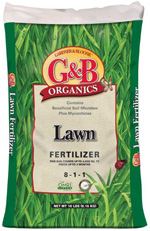|

     
|
 |
Featured Quote: "Nature, to be commanded, must be obeyed." ~Francis Bacon |
 |
 |
 |
 |
|
Planting
Maintenance Duties
|
 |
|
Dieffenbachia, also known as dumb cane, is a fairly hearty houseplant that has beautiful foliage.Dieffenbachia will grow well with a variety of lighting conditions, and can take some serious neglect and keep coming back. Dieffenbachia is somewhat temperamental when it comes to watering. It likes a good soak, followed by a dry period. If it stays too wet, you will see yellowing of the leaves, browning along the edges, or rotting of the canes. Yellowing and browning can generally be fixed by letting the plant properly dry out before watering again, but rot is irreversible. Conversely, if the plant goes too long without water or if the room it is in is too dry, it can be susceptible to mites and the leaves may dry up. Dieffenbachia tends to look best in a smaller bushy form. Keeping it in a small-ish pot will keep it this way, around 2' tall. Repotting should be done infrequently, as a larger pot will allow it to grow MUCH larger, up to 10-12' tall. Use a good potting soil in your pot, not garden soil. Dieffenbachia can bounce back from most forgetfulness, but if your neglect goes a little too far, it has a "nuclear option." You can cut the plant down to just canes, and it will generally grow back just like it was before. Try to learn from your previous mistakes, monitoring moisture before you water to ensure proper hydration and prevent rot. While trimming the plant back, save some of the canes for replanting. Propagation can be acheived by slicing off sections of the cane (about 2-3" long) and planting them about half-way into the soil. Keep the soil moist and you will see leaves growing in a matter of a couple weeks. Take into consideration that dieffenbachia is poisonous to ingest. Even getting sap on the skin can cause burning and reddening of the skin. Keep out of reach of pets and children. |
 |
|
Broccoli is a fantastic crop to grow while the weather is cool. Broccoli likes to be in full sun, as well as rich, PH-neutral, well-drained soil. A heavy feeder, broccoli benefits from high-nitrogen fertilizer, as well as amendments like compost, alfalfa meal, or composted chicken manure. Broccoli grows fairly large, so giving it some room to grow is important. Place seeds or starts about 18" apart and rows between two and three feet apart, to give you some room to walk. You can do two or three rows close together between walkways if you like to maximize spacing, but any more than that will make them hard to reach. Pests can be wide ranging, from cabbage looper caterpillars and cabbage-worms in cooler weather to grasshoppers and harlequin bugs when the weather has warmed up. The best way to manage these is to take a walk through your garden daily and look for damage. If you find any, look under the leaves and pull off and remove any pests. If you have chickens, they'll appreciate the snack, or the bugs can easily be squished. BT can also be used to eliminate caterpillar populations, but will need to be sprayed weekly to be effective. Harvesting your broccoli is easy. Cutting the stem five to six inches below the head will send the signal to the plant to continue growing new heads. Don't wait too long, or your broccoli will bolt, and the florets will spread out and become bitter. Note: if it does bolt, the yellow flowers are edible and great in salads. The leaves are also edible; young, tender leaves can be eaten raw in salads, and the older leaves cooked like spinach or kale. And you can always harvest your broccoli, cut it up, and freeze it to be used later. |
 |
|
Daylight Saving Time begins at 2 am on Sunday, March 13, 2016, so be sure to set your clocks forward one hour! Your clocks should be set from 2:00 a.m. local standard time, to 3:00 a.m. local daylight time. We remember to change our clocks by the phrase "Spring forward, fall back." As spring begins soon, why not embrace this season of renewal, and replace the batteries in all of your smoke detectors and carbon monoxide detectors. This simple act will help assure the safety of your family; properly working detectors save thousands of lives each year. |
 |
|
Can you grow grass in shade? Answer: That depends on how much shade you actually have. Fescue types of grass will tolerate shade better than most grasses. You can also use a shady blend grass seed, but even shade-tolerant grasses need a certain amount of sunshine to grow. Ultimately, the way you manage your shady lawn is more important than which seed type you select. Five practices that will help your shade-tolerant grass survive in the shade:
If you combine these suggestions, you should notice a much healthier lawn. If none of this works, consider replacing your shaded area with shade-loving flowers, groundcover, or mulch. |

Step by Step:
|
 click here for a printer friendly version of this page
click here for a printer friendly version of this page
 |
Written content © Garden Partners LLC, or respective authors. All Rights Reserved. Privacy Policy. All written content contained in this site is protected by United States copyright law and may not be reproduced, distributed, transmitted, displayed, published, or broadcast without prior written permission of Garden Partners, LLC. You may not alter or remove any trademark, copyright or other notice from copies of the content. |




